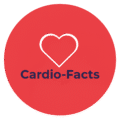Cardiovascular Treatments
At CardioFacts, we help you understand the wide range of treatments available for cardiovascular diseases — from medications and lifestyle changes to catheter-based interventions and surgery. Early and effective treatment can significantly improve quality of life and prognosis.
💊 Medications
🔹 Antihypertensives
Used to lower high blood pressure and reduce cardiovascular risk.
- Examples: ACE inhibitors, ARBs, calcium channel blockers, diuretics, beta-blockers
🔹 Antiplatelet Agents
Reduce blood clot formation in arteries.
- Examples: Aspirin, clopidogrel, ticagrelor
- Used after myocardial infarction, stenting, or in stroke prevention.
🔹 Statins and Lipid-Lowering Agents
Lower LDL cholesterol and stabilize atherosclerotic plaques.
- Examples: Atorvastatin, rosuvastatin, ezetimibe, PCSK9 inhibitors
🔹 Anticoagulants
Prevent blood clots in conditions like atrial fibrillation or deep vein thrombosis.
- Examples: Warfarin, apixaban, rivaroxaban, dabigatran
🔹 Heart Failure Therapies
Improve symptoms and survival in heart failure.
- Examples: ACEi/ARB, beta-blockers, MRA (spironolactone), SGLT2 inhibitors, ARNIs
🏃 Lifestyle and Non-Pharmacological Treatment
🔹 Dietary Interventions
- Mediterranean diet, low-sodium diet, DASH diet
- Reduce cholesterol, blood pressure, and weight
🔹 Physical Activity
- Regular aerobic exercise (e.g., walking, swimming) improves cardiac function
🔹 Smoking Cessation & Alcohol Moderation
- Major impact on long-term cardiovascular health
🩺 Interventional and Surgical Options
🔹 Percutaneous Coronary Intervention (PCI)
Balloon angioplasty and stenting to open blocked coronary arteries.
- Used for acute coronary syndrome or stable CAD with ischemia.
🔹 Catheter Ablation
Used to treat arrhythmias like atrial fibrillation or SVT.
🔹 Transcatheter Valve Therapies (TAVI, TEER)
Minimally invasive options for patients with severe valve disease (e.g., aortic stenosis, mitral regurgitation).
🔹 Implantable Devices
- Pacemakers for bradyarrhythmias
- ICDs for prevention of sudden cardiac death
- CRT for selected heart failure patients
🔹 Coronary Artery Bypass Grafting (CABG)
Surgical revascularization for multivessel CAD or complex anatomy.
⚠️ Monitoring & Follow-up
Effective treatment doesn’t end with prescription. Ongoing follow-up, lab tests, imaging, and adherence are key to long-term success.
📘 Disclaimer: This information is educational and does not replace professional medical advice. Always consult your physician or cardiologist for tailored treatment options.
